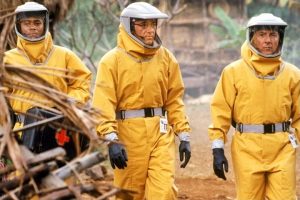
There’s an ongoing debate among public health officials about how quickly they should notify the public about foodborne illness outbreaks, and how much information should be shared. Is it better to tell people as early as possible, or could that create panic that is counterproductive?
Food safety researchers are now calling on public health agencies to develop clear guidelines on when to inform the public about foodborne illness outbreaks – something which is often handled on an ad hoc basis at the local, state and federal levels.
To learn more about how health agencies are currently addressing these questions, researchers evaluated 11 case studies of large outbreaks, dating back to 1996.
Not only is there no clear consensus on how to respond, they discovered, but there is no system in place to help officials decide when to tell the public about a foodborne illness outbreak.
“We found that pressure from social media, or from companies, has sometimes influenced when health officials release information, which is problematic,” says Ben Chapman, lead author of a paper on the work and an associate professor of agricultural and human sciences at North Carolina State University.
“Officials need to have clearly defined processes for determining when information should be made public, and those processes don’t appear to exist right now,” Chapman says.
Instead, researchers found that public health agencies – from the federal Centers for Disease Control and Prevention to state and local agencies – make decisions about sharing information on a case-by-case basis.
“There are advantages and risks to both sharing and withholding information,” Chapman says.
Sharing information early in an outbreak can allow consumers to make informed decisions about their food choices that limit risk. But there can also be a lot of uncertainty about that information.
“For example, officials may be investigating a particular restaurant or type of food, but the investigation could ultimately find that the culprit was actually a different source altogether,” Chapman says.
By the same token, withholding information until there is less uncertainty may increase public health risks because the source of the illness may remain accessible to unwitting consumers.
“The best case is to share what you know, and what you don’t know, in an open and transparent way,” Chapman says. “Talking about uncertainty may be uncomfortable for officials, but they need to have a plan for how to do so.”
The paper, “Going Public: Early Disclosure of Food Risks for the Benefit of Public Health,” is published in the Journal of Environmental Health. The paper was co-authored by Maria Sol Erdozaim, a former undergraduate at Kansas State University, and Douglas Powell of Powell Food Safety.
-shipman-
Note to Editors: The study abstract follows.
“Going Public: Early Disclosure of Food Risks for the Benefit of Public Health”
Authors: Benjamin Chapman, North Carolina State University; Maria Sol Erdozaim, Kansas State University; Douglas Powell, Powell Food Safety
Published: March 2017, Journal of Environmental Health
Abstract: Often during an outbreak of foodborne illness, there are health officials who have data indicating that there is a risk prior to notifying the public. During the lag period between the first public health signal and some release of public information, there are decision makers who are weighing evidence with the impacts of going public. Multiple agencies and analysts have lamented that there is not a common playbook or decision tree for how public health agencies determine what information to release and when. Regularly, health authorities suggest that how and when public information is released is evaluated on a case-by-case basis without sharing the steps and criteria used to make decisions. Information provision on its own is not enough. Risk communication, to be effective and grounded in behavior theory, should provide control measure options for risk management decisions. There is no indication in the literature that consumers benefit from paternalistic protection decisions to guard against information overload. A review of the risk communication literature related to outbreaks, as well as case studies of actual incidents, are explored and a blueprint for health authorities to follow is provided.
